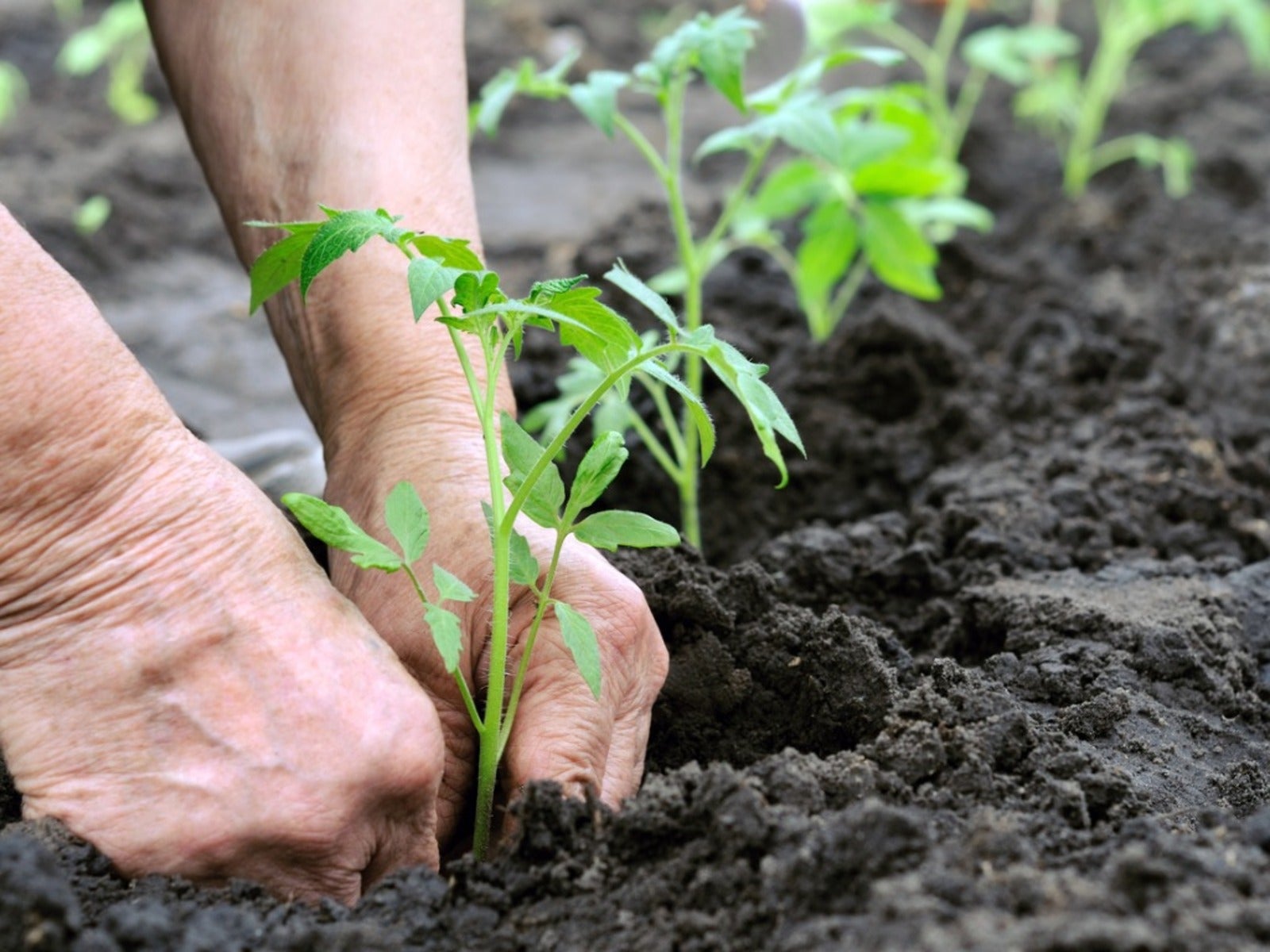How Deep To Plant Tomatoes For Thriving Plants

Tomatoes are likely one of the most commonly grown household crops, but in order to garner a bumper crop off a healthy plant you need to know the correct planting depth for tomatoes. Tomato plant depth is as important to the overall health of the plant as the correct soil, location, and proper irrigation. So, what precisely is the correct tomato plant depth? You do need to plant tomatoes deep to promote root growth, but how deep is too deep for tomato plants?
Tomato Plant Basics
Before you even contemplate how deep to plant your tomatoes, you need to decide how many and of what variety you want to grow. The average family will need about two to four plants per person for fresh fruit. If you want to process your tomatoes, increase the number of plants to five to ten plants per person.
Decide what type of tomatoes you want to grow. Cherry, roma, slicing, heirloom, determinate or indeterminate. Once you have your tomato wish list, are you going to grow them from seed or purchase starts from a nursery? If you want to start from seed, start the seeds eight weeks before the last frost date for your area.
Tomato plants should go in the ground about late May to early June depending upon your region. Seedlings should be hardened off before planting. Select a site with at least eight hours of full sun and rich soil. Amend the soil with plenty of compost and work in well if need be.
To give the tomato plants a jump start, warm your garden soil by covering the planting site with black or red plastic a couple of weeks before your intended planting time.
How to Plant a Tomato
Once your site has been prepped and the tomatoes hardened off, soak the plants in a bucket of water for an hour or two prior to transplanting. Alternatively, you can fill the transplant hole with water, allow it to soak in, and then transplant the tomato.
Remove pots or bands from transplants. Tomatoes planted in peat pots can remain in the pot. Next, remove any suckers -- the side shoots off the main stem -- below the first blooms. Then decide which planting method works best for you.
Gardening tips, videos, info and more delivered right to your inbox!
Sign up for the Gardening Know How newsletter today and receive a free copy of our e-book "How to Grow Delicious Tomatoes".
The problem with planting tomatoes is that those started inside or even purchased often grow leggy as they search for relatively low late winter/early spring light. Unlike other crops, tomatoes readily form roots along their stems if placed underground, so the solution is planting tomatoes deep. The downside to this is the deeper the roots are the cooler the temps and tomatoes like it warm. Also, there’s less oxygen deeper down in the soil which isn’t good for the plant.
Types of Tomato Planting
There are two ways to plant tomatoes: the trench method or the vertical method. Both have particular benefits. Leggy plants should use the trench method which will bury more of the plant and encourage rooting along the stem which in turn makes for a more stable and vigorous plant. Vertical planting requires plants to be planted deeper which may result in slower growth and later fruit production.
To trench the plant, dig a trench 3 to 4 inches (8-10 cm) deep and 2 to 4 feet (0.6-1 m) apart. Lay the plant at an angle and cover the stem with soil, pushing dirt up to support the stem. Mark the root ball end of the plant to prevent root damage while cultivating around the tomatoes. Place whatever support you are using around the tomato plant at this time. Don't worry if the plant looks slightly askew. It will naturally right itself within a few weeks.
The vertical planting method requires a deeper hole. How deep? It’s recommended that a full 2/3rd of the plant is underground. This means if you have a 10 inch (25 cm) plant, all but the top 3 to 4 inches (8-10 cm) should be under soil. If you haven’t already amended the soil, do so now. Remove any leaves that would be under the soil and then place the transplant into the hole and fill in with soil.
Once the tomatoes have been transplanted, provide them with support if necessary. Provide the tomatoes with 1 to 2 inches (2.5-5 cm) of water per week and water slowly and deeply. Fertilize your plants every four to six weeks through the growing season.

Amy Grant has been gardening for 30 years and writing for 15. A professional chef and caterer, Amy's area of expertise is culinary gardening.
-
 Looking For Plants To Give You The Soft And Fuzzies? Try These 5 Fuzzy Leaf Plant Options
Looking For Plants To Give You The Soft And Fuzzies? Try These 5 Fuzzy Leaf Plant OptionsLovers of texture, drama, silver foliage and tactile plants will adore these special sensory garden additions. These fuzzy leaf plant options will leave you all aglow
By Susan Albert
-
 Get Ready For A Summer Of Hummers! Grow These Full Sun Hummingbird Plants and Flowers
Get Ready For A Summer Of Hummers! Grow These Full Sun Hummingbird Plants and FlowersIf you’re lucky enough to enjoy a sunny backyard, make sure you are maxing out on your pollinator opportunities and grow these full sun hummingbird plants and flowers
By Tonya Barnett